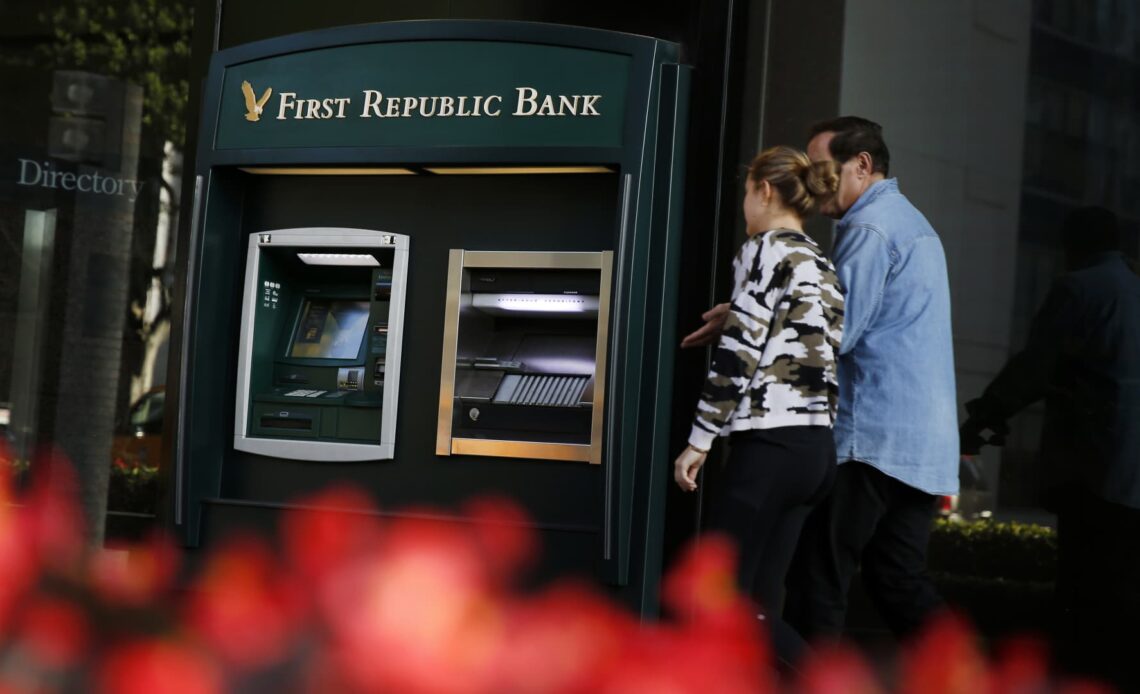Regional banking stocks are on pace for their worst year back to 2006, with the long tail of the SVB collapse. But bank stocks had been in rally mode since May, when First Republic was seized by the government and sold to JPMorgan, until bond rating agencies began issuing August warnings and downgrades.
Bloomberg | Bloomberg | Getty Images
Just how bad off are America’s banks, really?
Bond rating agencies trash-talked banks all through August, helping drive a near-6% drop in the S&P 500 during the month. But Wall Street equity analysts who cover banks argue that their counterparts on the bond side of the research profession, at Moody’s Investors Service, Standard & Poor’s and Fitch Ratings, got it wrong. They point to a period of rising bank stock prices before the bond ratings calls and better-than-expected earnings reports as evidence that things are better than the agencies think.
While the regional banking sector as tracked by the SPDR S&P Regional Banking Index is down nearly 25% year to date, according to Morningstar — and on pace for the worst year on record back to its inception in 2006, with the long tail of the SVB collapse hard to claw back gains from — bank stocks had been in rally mode from May to July. Regional bank stocks, in particular, gained as much as 35% before the bond warnings and downgrades began. Meanwhile, second-quarter bank earnings beat forecasts by 5%, according to Morgan Stanley.
The higher interest rates bond analysts cited hurt profits some, but most banks’ net interest income and margins were higher than a year before. Delinquencies on commercial real estate loans rose, but stayed well below 1% of loans at most institutions, with some of the banks singled out by bond rating agencies reporting no delinquencies at all. The ratings actions pushed the regional bank stock index 10% lower for the month-long period ending Sept. 8, according to Morningstar (the Moody’s bank warning was issued August 7).
At stake is not only what bank stocks may do next, but whether banks will be able to fill their role in providing credit to the rest of the economy, said Jill Cetina, associate managing director for U.S. banks at Moody’s. Their medium-term fate will have a lot to do with outside forces, from whether the Federal Reserve cuts interest rates next year to how fast the return-to-work push from employers in recent months gains momentum. Looming over all of this is the question of whether there will be a recession by early 2024…
Click Here to Read the Full Original Article at Top News and Analysis (pro)…


